E28 5 Series Comparison: 535iS Versus 528e Stroker – BimmerLife
There are few BMWs that make a statement quite like the E28 5 Series. The 1982–1988 E28 was a subtle refinement of the E12 5 Series; these two generations established the defining design language for BMW’s mid-size sport sedan for nearly two decades. Echoes of that philosophy could even be seen through the mid-1990s with the E34 5 Series, but nothing was more bold than the E28. Its chiseled, slant-nosed, shark-like angles were an aggressive interpretation of the three-box form that didn’t allow anyone to forget that this was no regular sedan. No, it was a sport sedan—the thing that BMW did like nobody else.
It was fast yet practical. You could haul four adults in comfort to the board meeting, and then haul… freight when it was time to head to the mountains on the weekend. In the corners, it did things that no car of its size or refinement had ever done. When the M crown was eventually bestowed upon the E28, the M5 was the fastest sedan in the world.
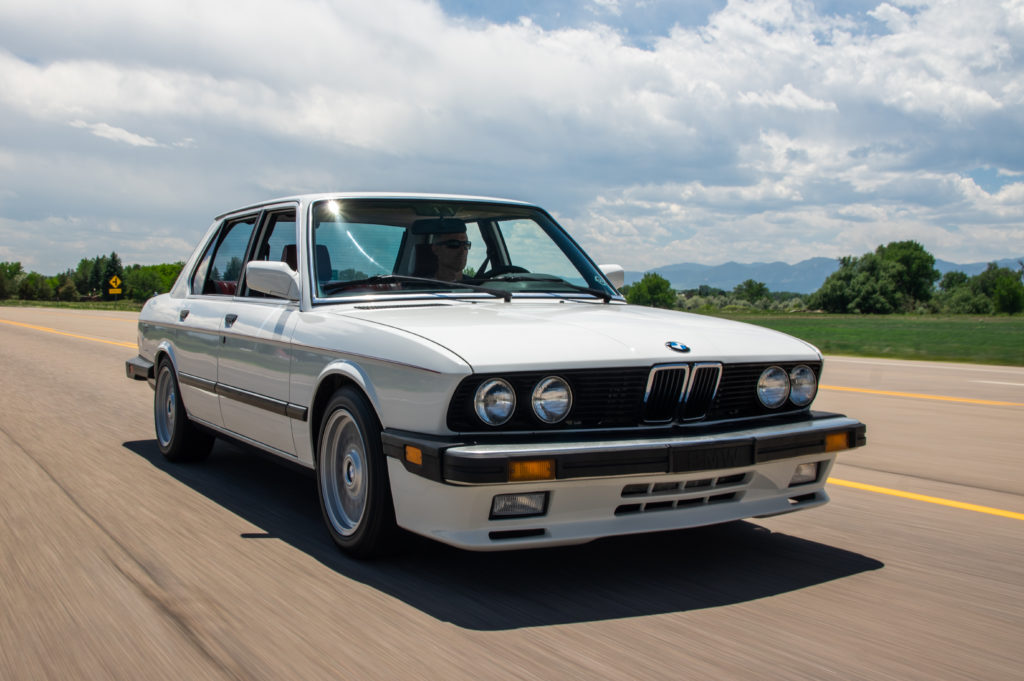
Three decades later, the E28 is a victim of its own success. Unlike its grand-touring E24 6 Series cousins, which were often tucked away and reserved for weekend jaunts, preserving their mileage and condition, E28s were thoroughly used and enjoyed. They were so popular that finding an example in today’s world that hasn’t had its wheels driven off—literally, in some cases—can be difficult. Mileage of 100,000+ is the norm, but because the E28 was built so well, most are not the worse for it. With a healthy dose of patience, and a budget tolerant to the current market, a good E28 can still be found.
Which E28 to get is a matter of preference.
While the M5 is the pinnacle, for most it has appreciated beyond the mission of finding a usable, yet practical icon of BMW greatness—but the 535i has not. Arguably, the 535i is a better car, too. Powered by the venerable “Big Six” M30B34 engine, the 1985 through 1988 535i does not have the maintenance requirements of the M5’s S38 engine, and it has better engine management than the sometimes temperamental early 533i. Up the ante to the 535is, and you got near-M5 looks and performance, thanks to a sport suspension, sport seats, and M Technic front and rear spoilers. An optional limited-slip differential added further value to the package.
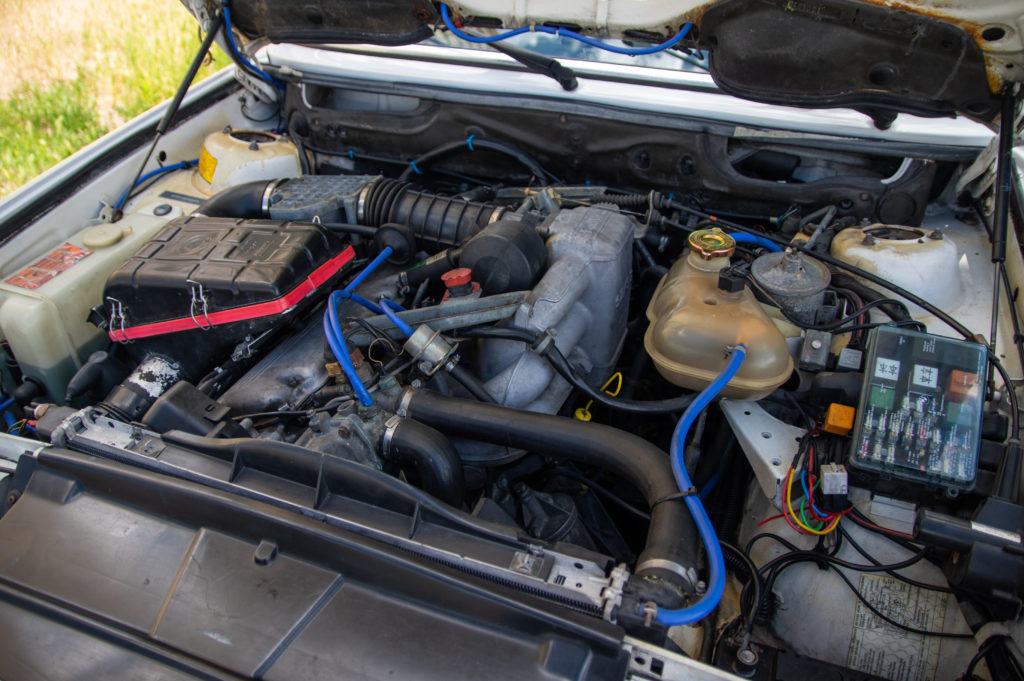
In the U.S. market, we also got the 528e, which was powered by the eta (the Greek letter symbolizing economy) M20B27 six-cylinder engine found in the early E30 3 Series generation. Despite not having as much torque as the M30, the M20 eta was well suited to the E28, with its torque being accessible low in the rev band. Some of my favorite E28s have been examples of the 528e, which are lighter than the Big Six 535i.
The M20B25 engine (found in most six-cylinder E30s) would have been a better option, which for a marginal drop in torque closed the gap in horsepower to the M30, but we never saw those in the U.S. market.
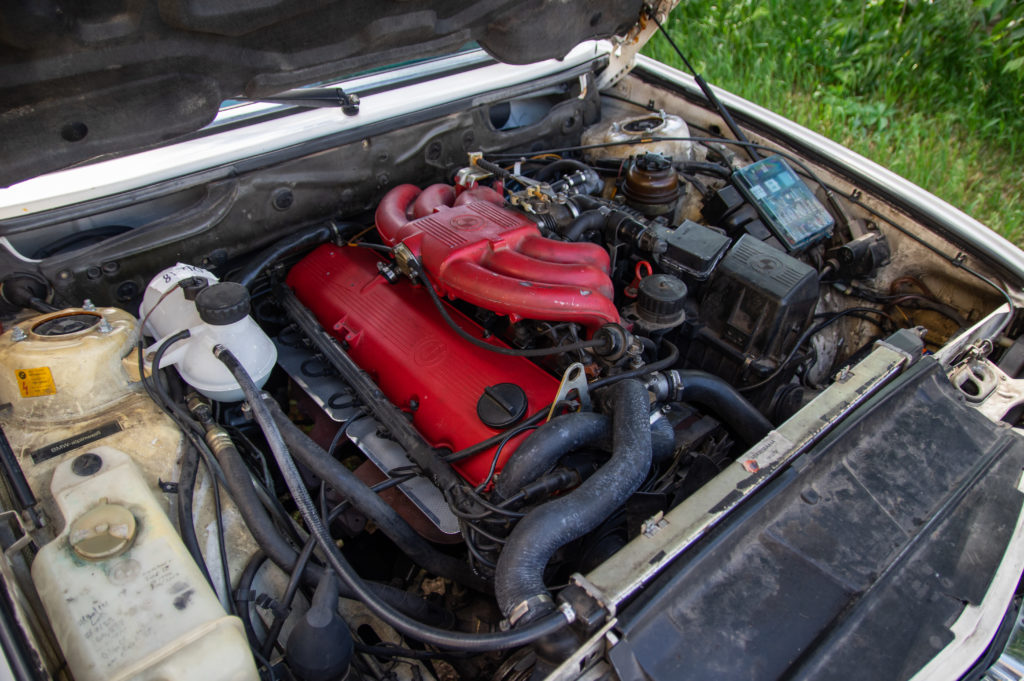
We did, however, have a one-year-only alternative. In 1988 the 528e was powered by the M20 “super eta,” which used the M20B25 “i” crank and pistons in an M20B27 eta block, with a slightly modified cylinder head and engine management. This resulted in a modest 700-rpm redline increase from 4,800 to 5,500, which was good for seven more horsepower—but the real advantage was in the super eta’s potential. Add a true M20B25 “i” head, intake, exhaust manifolds, and engine management, and you’ve got a factory stroker motor that revs to 6,800 rpm with the displacement of an eta.
To put some numbers in comparison, the 535i’s M30B34 engine weighs 315 pounds and makes 182 horsepower with 214 pound-feet of torque. The M20B27 super-eta engine weighs 285 pounds and makes 127 horsepower with 177 pound-feet of torque. Add the additional M20B25 “i” bits to bump it to 168 horsepower with no discernable loss of torque (no, it’s not that simple, but we’ll keep it that way for discussion’s sake). That yields 0.58 horsepower per pound for the stroker M20 versus 0.57 horsepower per pound in the M30B34. The latter still has a 37-pound-foot torque advantage, and torque is what you feel, but the numbers are close enough to warrant a comparison.
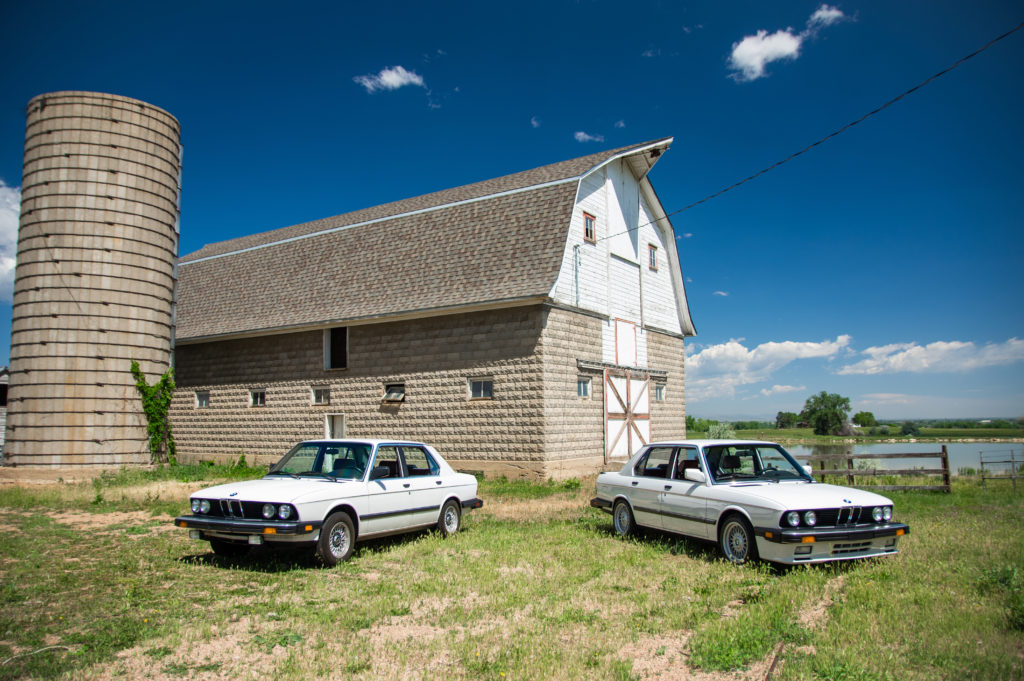
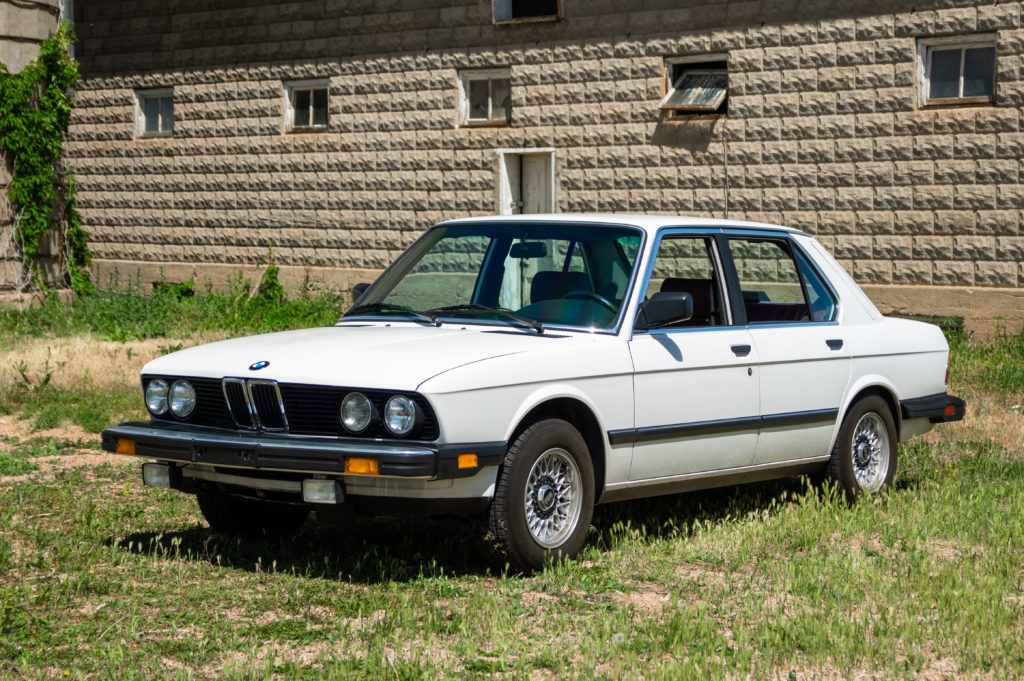
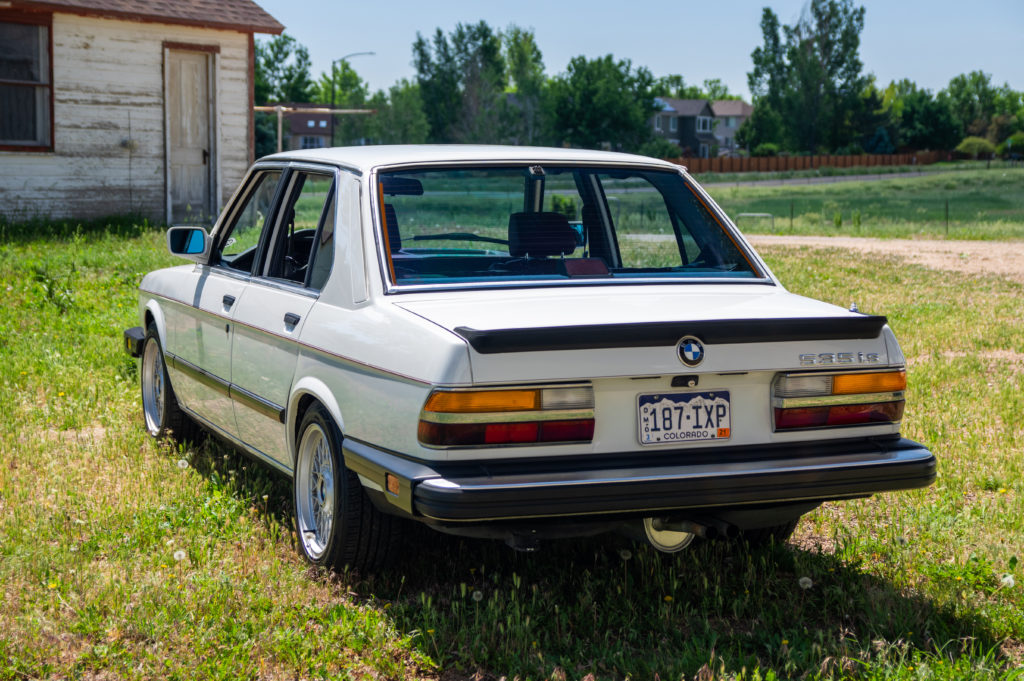
Call it fate or circumstance, but recently I found myself in possession of two such examples. The first was a 1988 BMW 535is finished in Alpine White over a Cardinal Red interior, the last year of the E28 and arguably one of the best color combinations. A friend bought it on Bring a Trailer and then sent it to us for a manual swap. He later sold it to me in trade for an M coupe, and I ended up selling it to a local family who had been looking for a classic BMW.
The second was also a 1988 528e in Alpine White over Cardinal Red, this one with a bad automatic gearbox. While I was flying, the boys at the shop bought it on Bring a Trailer, so we did—quite literally—and trailered it to Colorado.
The first order of business was to dispense with the faulty slushbox and install a proper five-speed manual. Because it was a 1988 model year, it had the super-eta M20, which we made into a stroker M20 using an “i” cylinder head, intake, airflow meter, exhaust manifold, and Bosch 173 ECU. Another friend swooped that one up before we completed it (leaving some details unfinished, as you can see in the pictures), and will be upgrading it further to an S54 engine.
There was a short window of opportunity before both went away, so some journalism was in order.
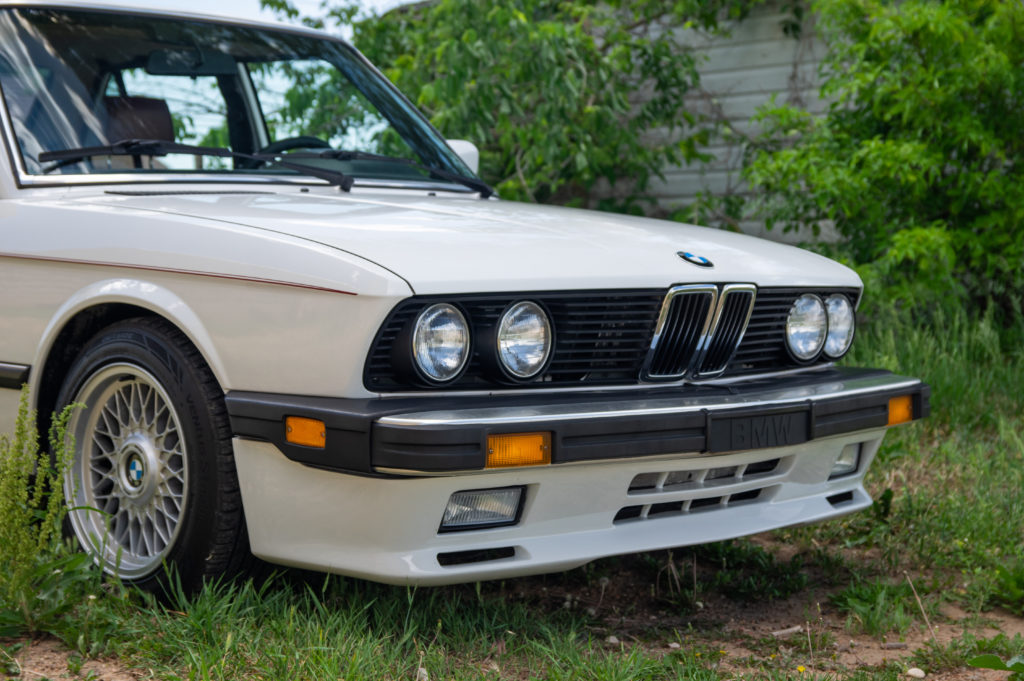
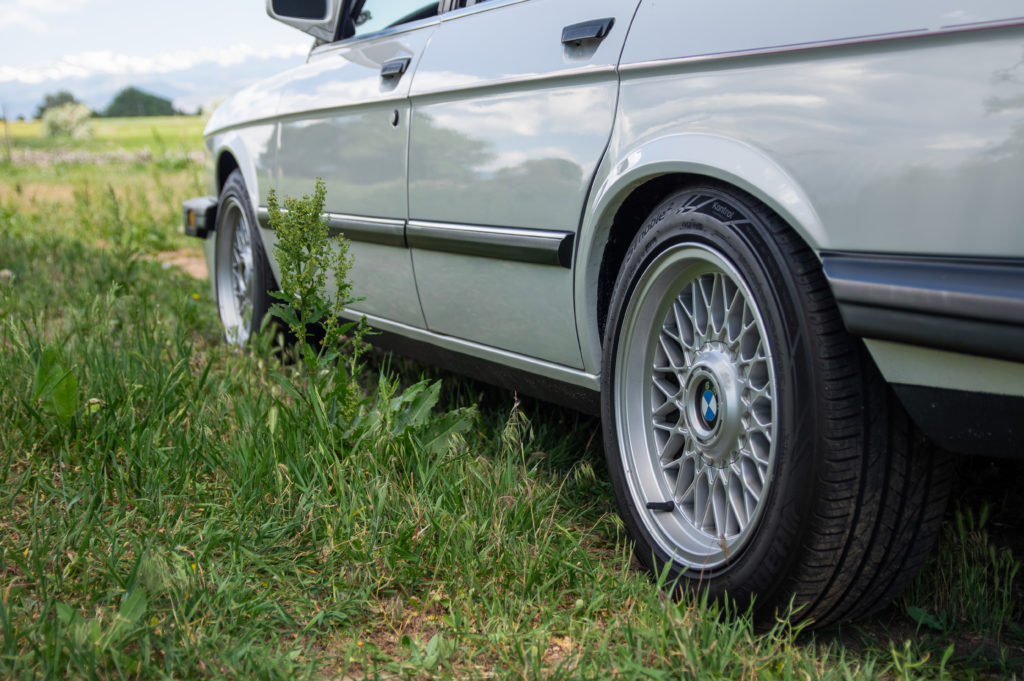
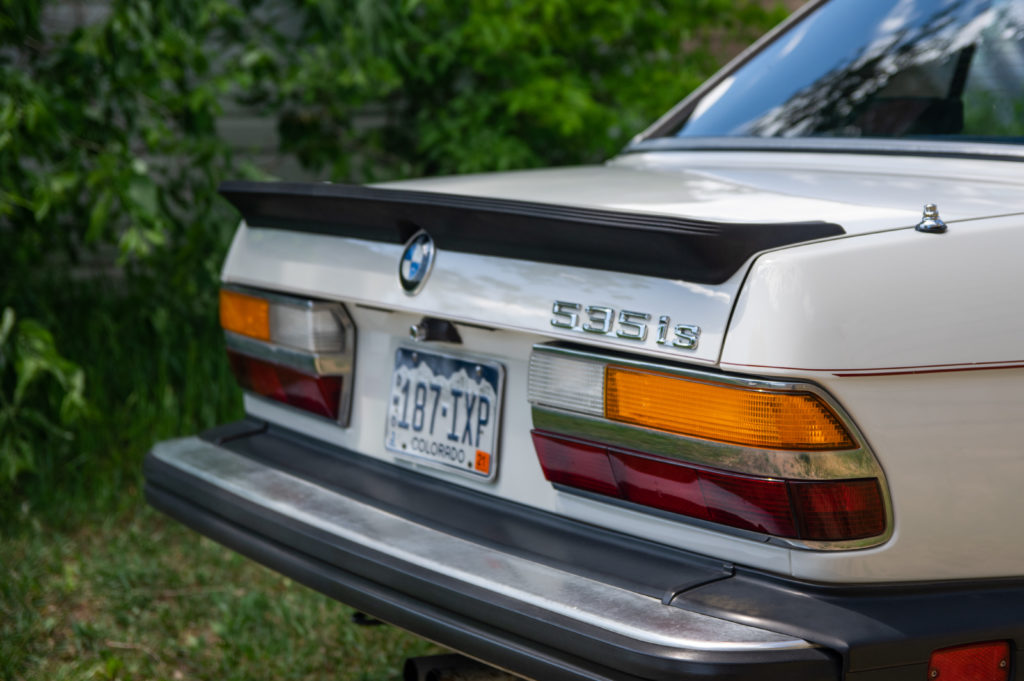
At first glance, from a distance, both E28s look strikingly similar. Alpine White is worn well by both of them, and the paint condition on each has endured three decades with poise. Move closer and the sporting bits of the 535iS stand out, with this example featuring a Racing Dynamics front valance in lieu of the factory “iS” valance.
The 535iS also has sixteen-inch E38 Style 5 basketweave wheels, a subtle, yet modern evolution of the original fifteen-inch basketweaves. The 528e lacks the front valance and rear spoiler of the 535iS, which results in a clean and tidy look, although markedly less aggressive. The 528e’s lower front splitter and mirrors are black instead of being paint-matched like those on the 535iS, but black BBS center caps on fourteen-inch basketweaves make it a theme that works nicely on this car. Both feature thin chrome accents on the door-guard trim and between the taillights, a nod to the past. Add some Euro bumpers, grilles, and headlights, and either would be transformed into an absolute showstopper.
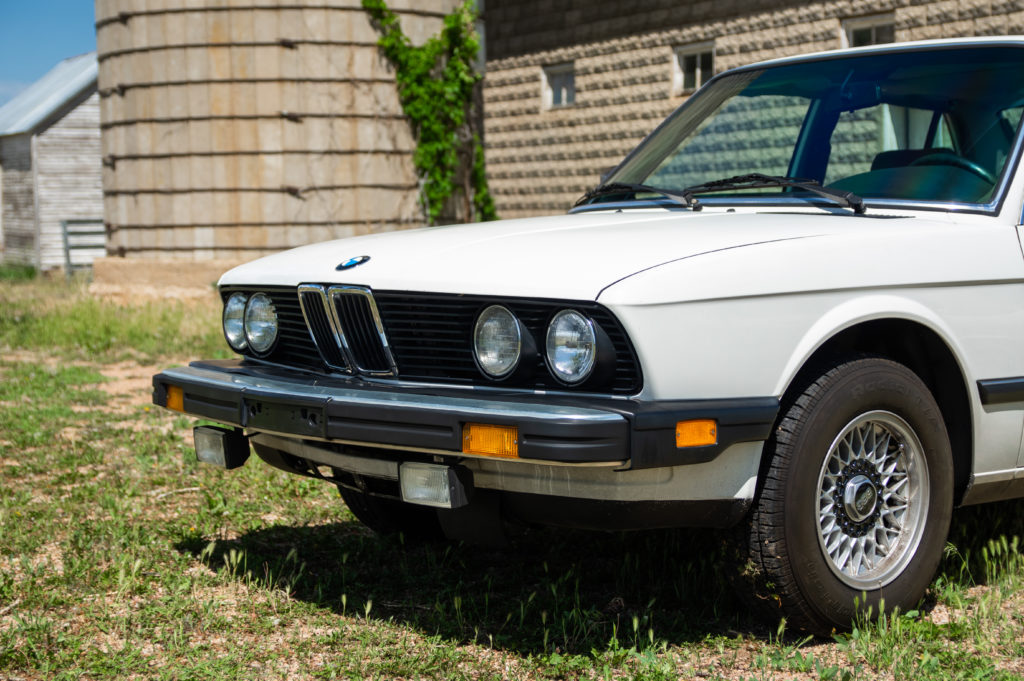
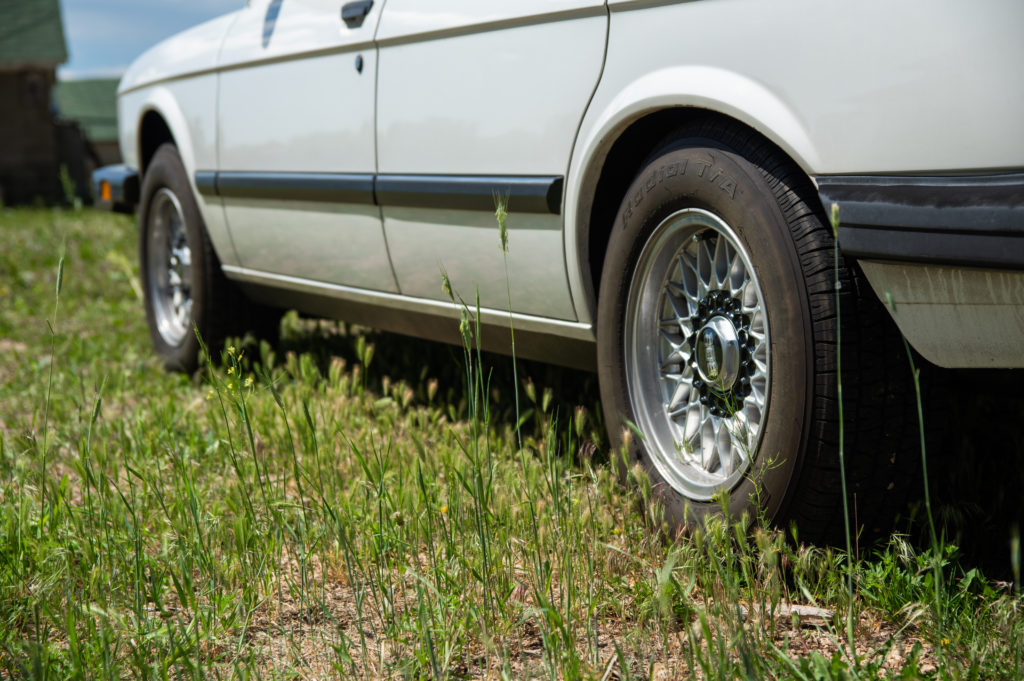
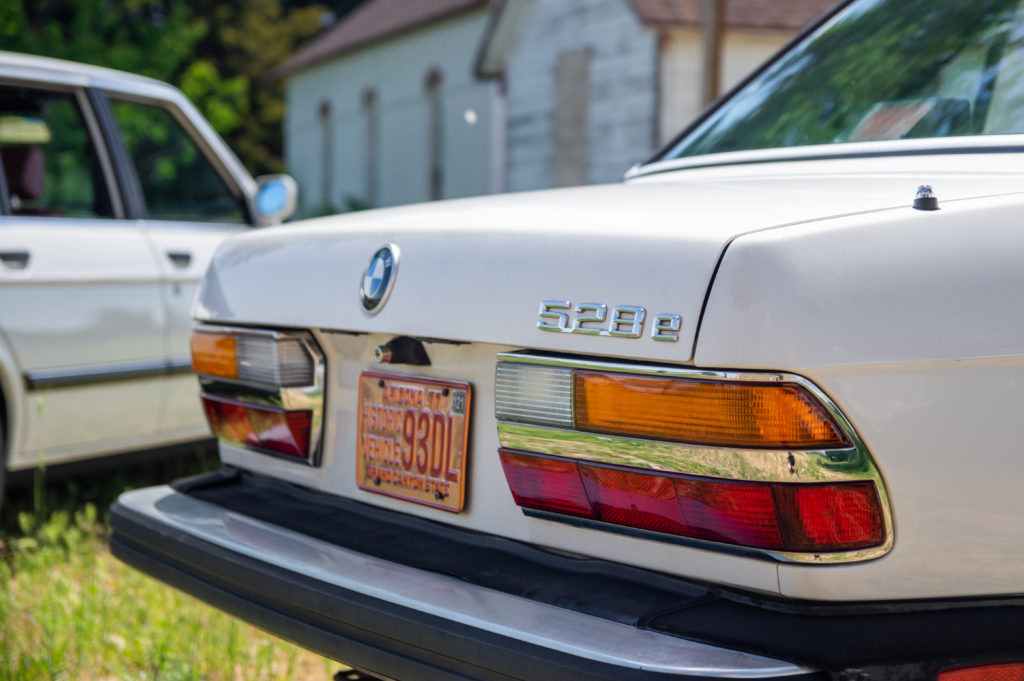
Inside is where both E28s really shine. Cardinal Red is simply marvelous, a color that steals the show on any BMW lucky enough to be ordered with Interior Option Code 256. It optimizes the 5 Series’ multi-faceted mission by adding a striking interior to a purposefully subtle exterior. The sport seats of the 535iS and its overall interior condition outshine the worn and torn comfort seats of the 528e—but there is a reason they are called comfort seats, one that needs no further explanation.
One of my favorite E28-isms is the domino-size power-seat buttons connected to seat motors powerful enough to tow a battleship. Select your intention with an audible click and you are met with a loud BZZZZ and a firm change of position. Even the headrests are powered, a rare luxury in the 1980s!
This 535iS features a soft leather M Tech steering wheel and ZHP shift knob, while the 528e retains its four-spoke steering wheel—for now. The 528e’s “mushroom” shift knob was pulled from my secret parts stash; it’s my favorite BMW shift knob of all time.
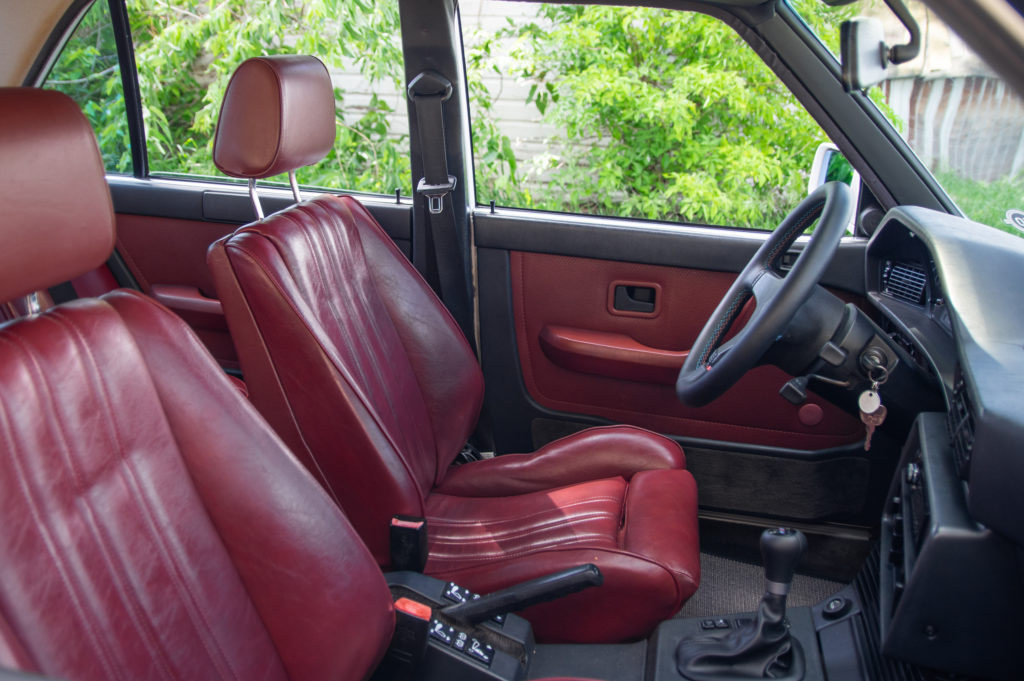
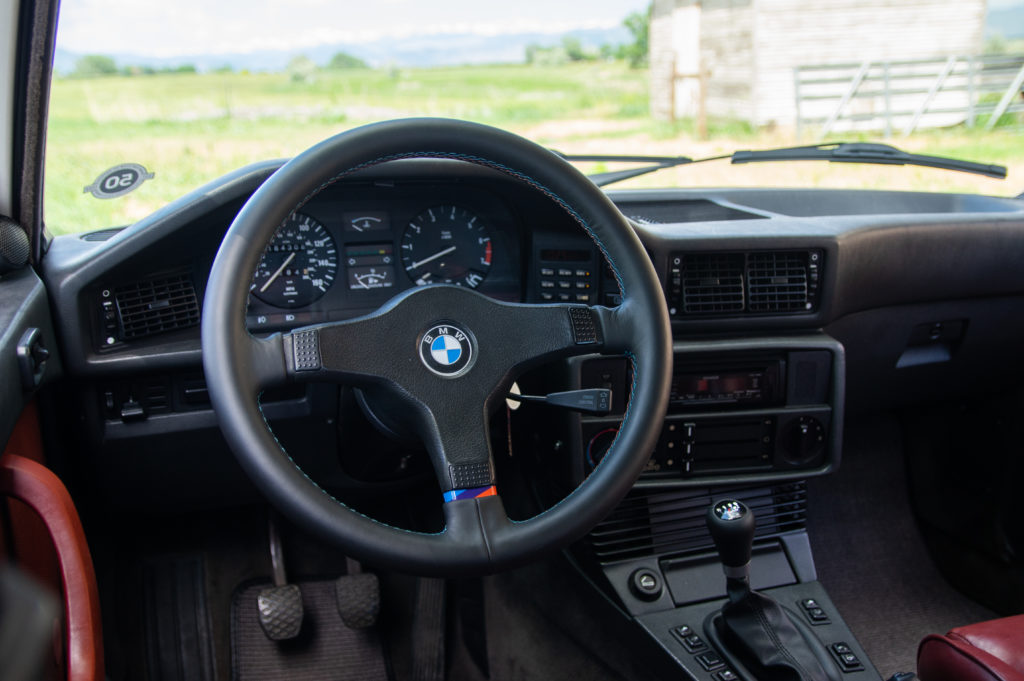
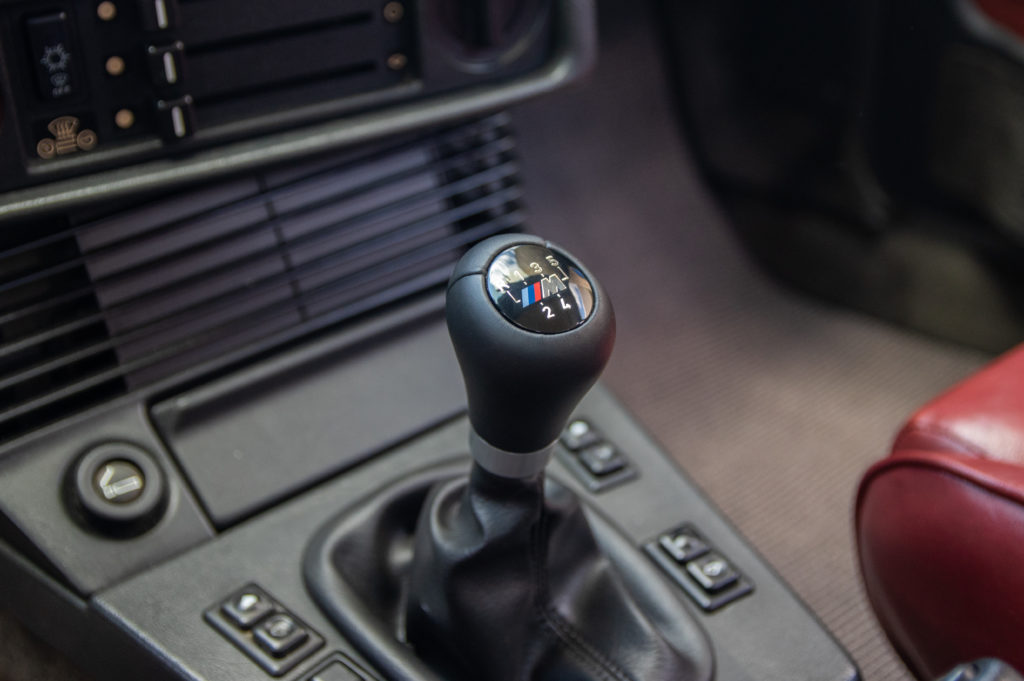
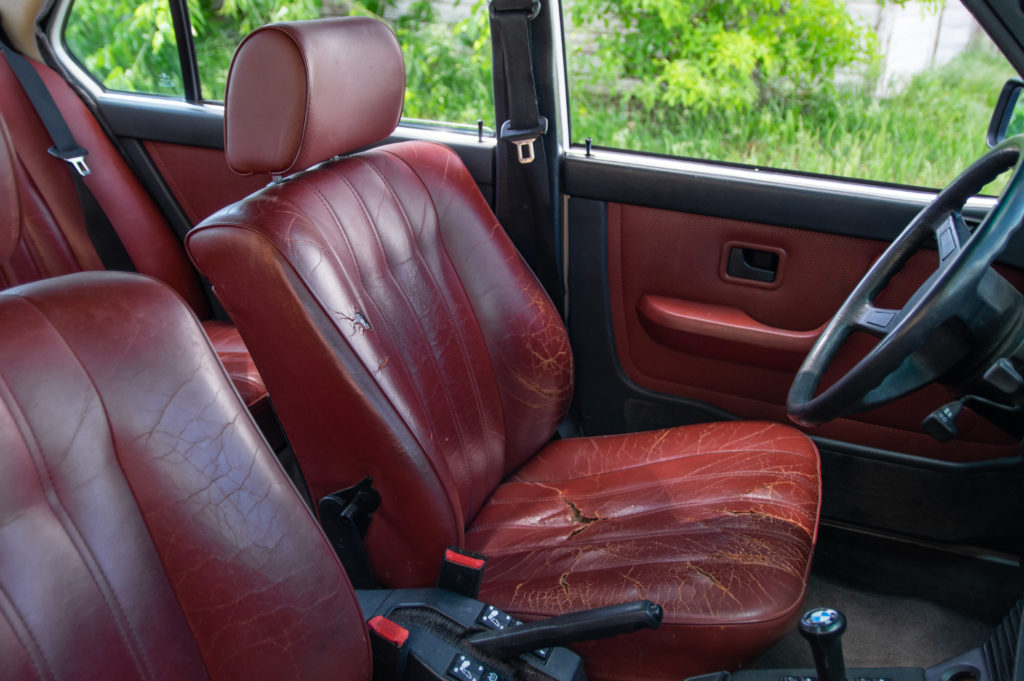
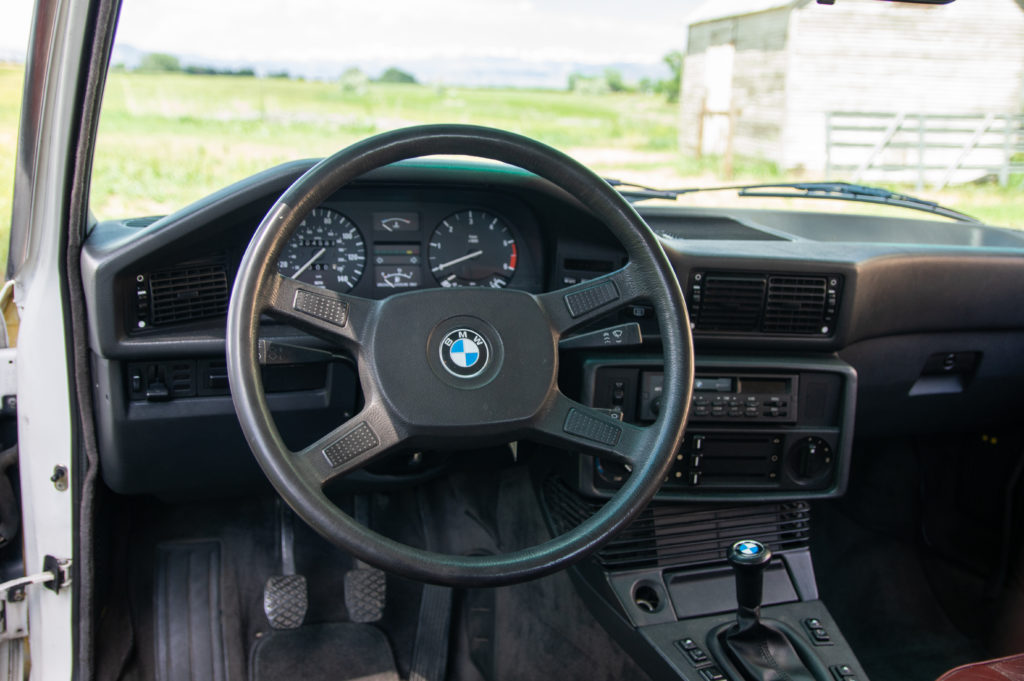
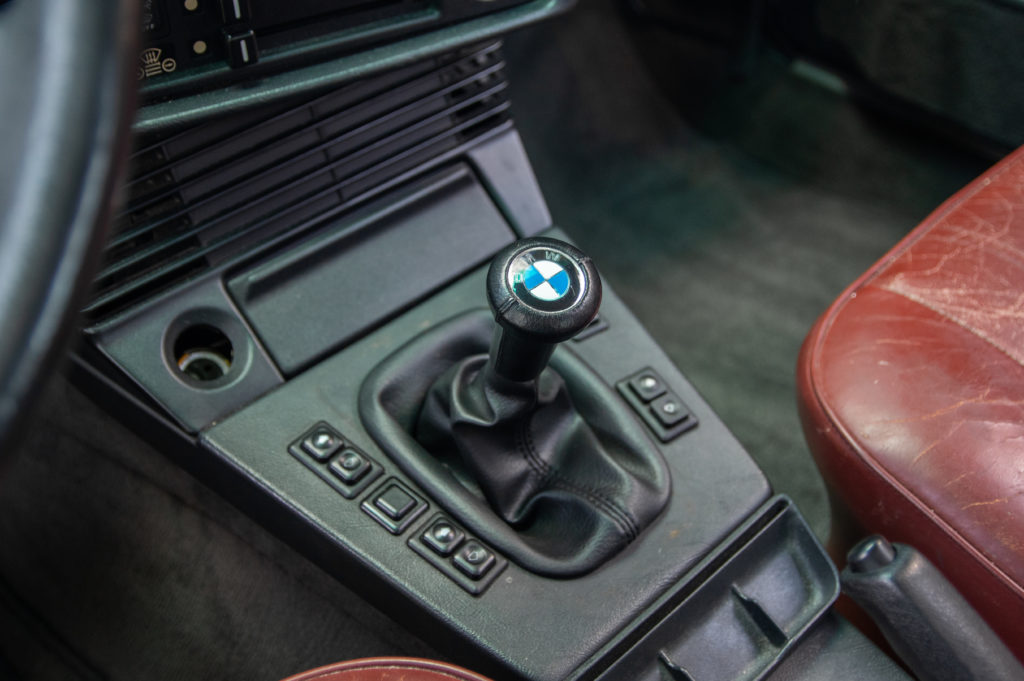
Once under way, the gap between the two E28s narrows. In addition to the factory sport suspension settings, this 535iS has Bilstein Sport shocks and H&R sport springs, along with the optional limited-slip differential. It inspires supreme confidence in the corners and communicates its intentions clearly and honestly. Throttle-steering through those corners, the M30 engine delivers plentiful buttery-smooth torque in that old-school, linear BMW fashion—and torque is what you feel.
However, according to my back-of-the-napkin calculations, the 528e in stroker form has a marginally better power-to-weight ratio. In reality, it is not an advantage that you can feel, but it does rev noticeably more freely; perhaps it’s because of M20’s lighter engine internals. This is also a good thing, because you need to rev it in order to extract the stroker M20’s power.
In the corners, the 528e dives and rolls significantly more than the 535iS, but it does feel lighter than the actual weight difference between the pair. Despite that body roll, it handles astonishingly well—even on skinny fourteen-inch tires. A limited-slip differential that we added to the 528e helps even more, allowing the tail to step out when desired if the engine is in the power band.
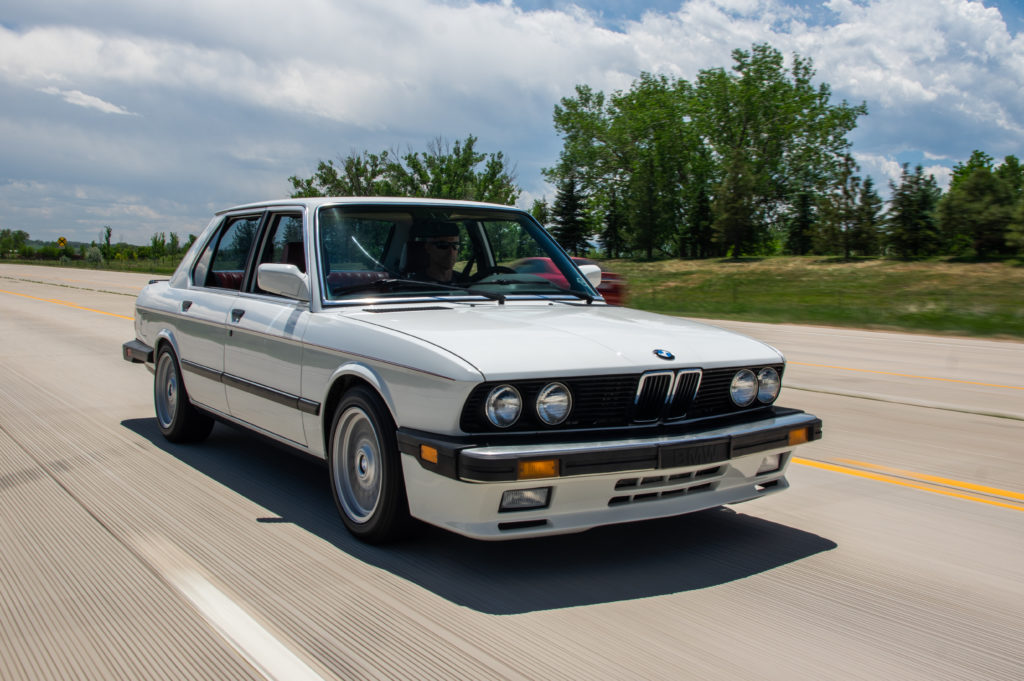
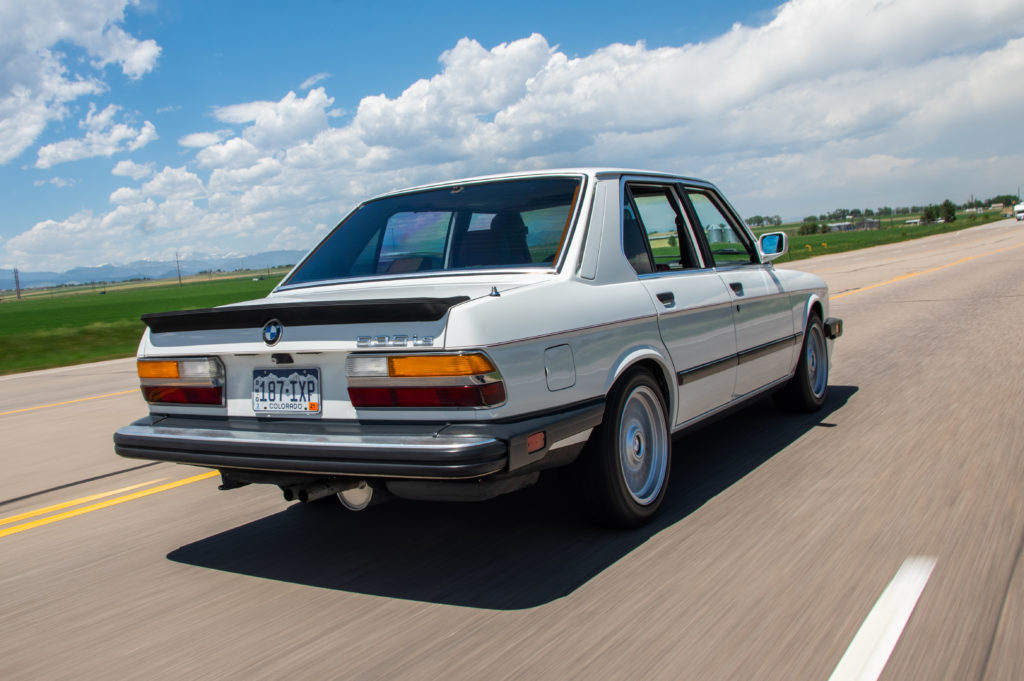
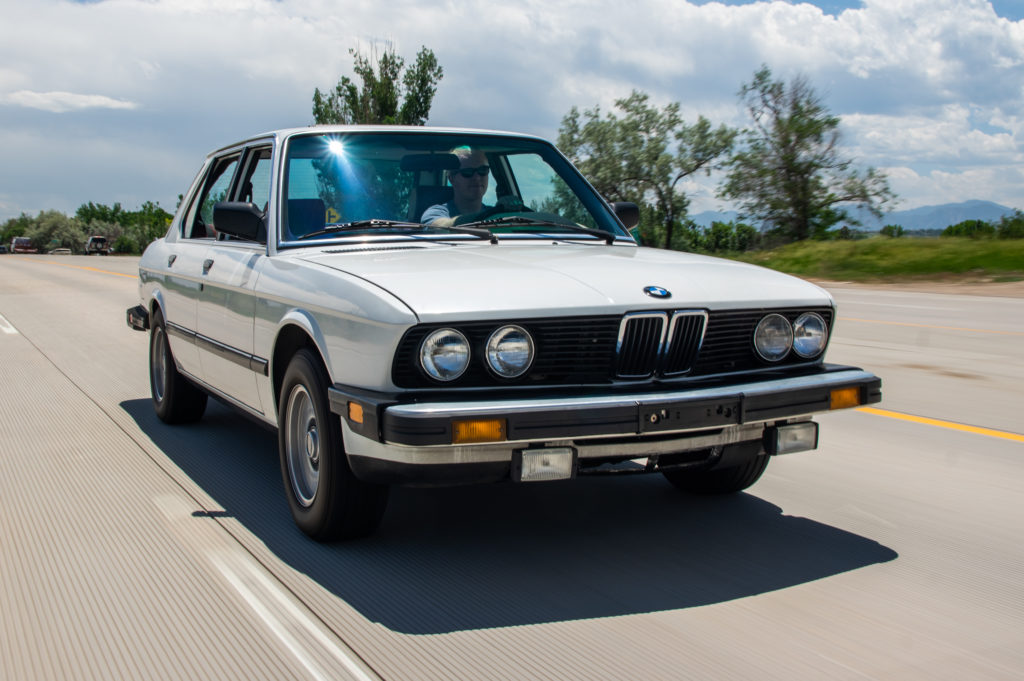
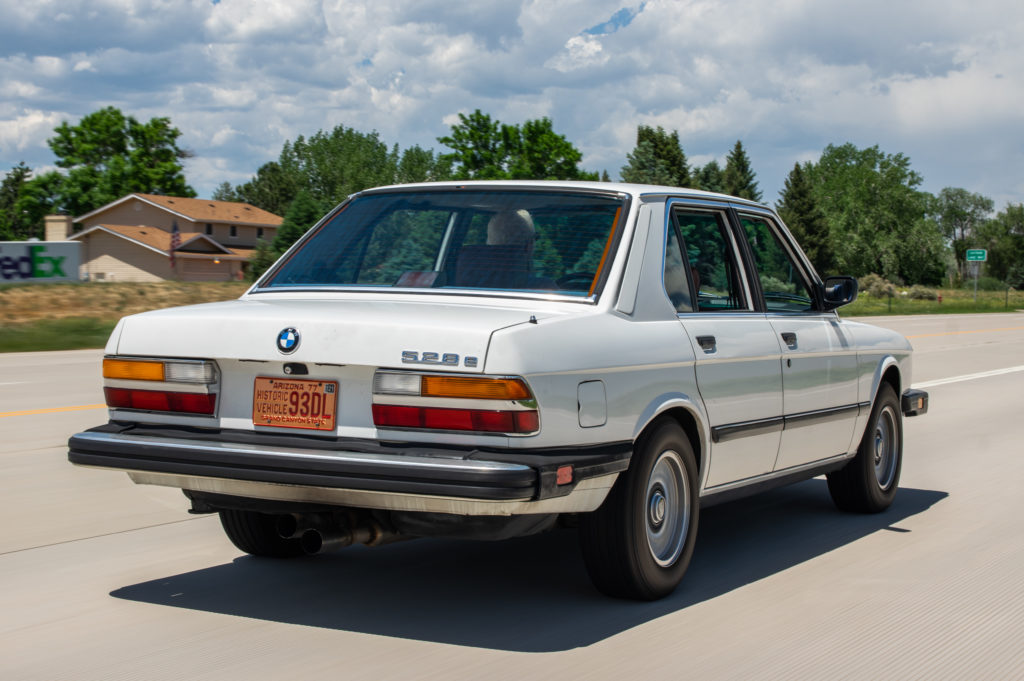
After driving both E28s, I was left without a categorical conclusion as to which one was better. On paper, the 535iS is certainly the superior car; it is more collectible, it has more options, and it makes a bolder statement than the 528e does. But the 528e has an underdog quality to it; the rev-happy M20 stroker engine is a hoot to wring out, and despite body roll reminiscent of a canoe in rough seas, it doesn’t yield as much to the 535iS as it should in the corners. I daresay that the 528e was the more fun car to drive of the pair!
In the end, deciding which Alpine White over Cardinal Red E28 is the better car is moot, because they are both fantastic. Each transported me back to 1988—a time when BMW was focused and hungry, and you feel that from behind the wheel. It was a time when BMW truly did one thing and it did it well: It built the Ultimate Driving Machine.—Alex McCulloch.
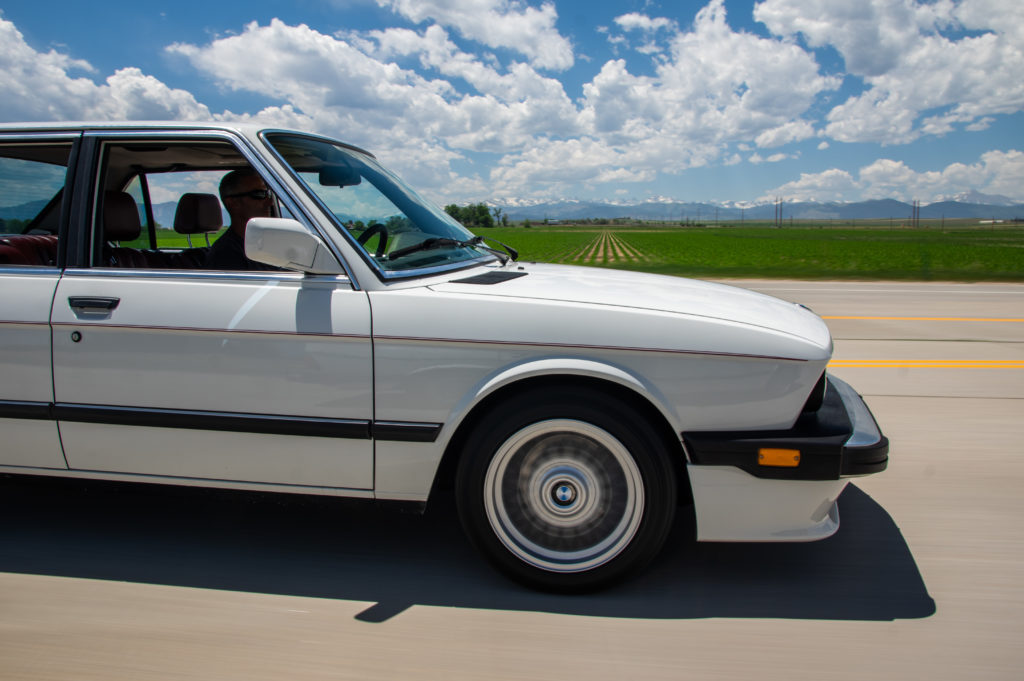
[Photos courtesy Peter Thompson.]






